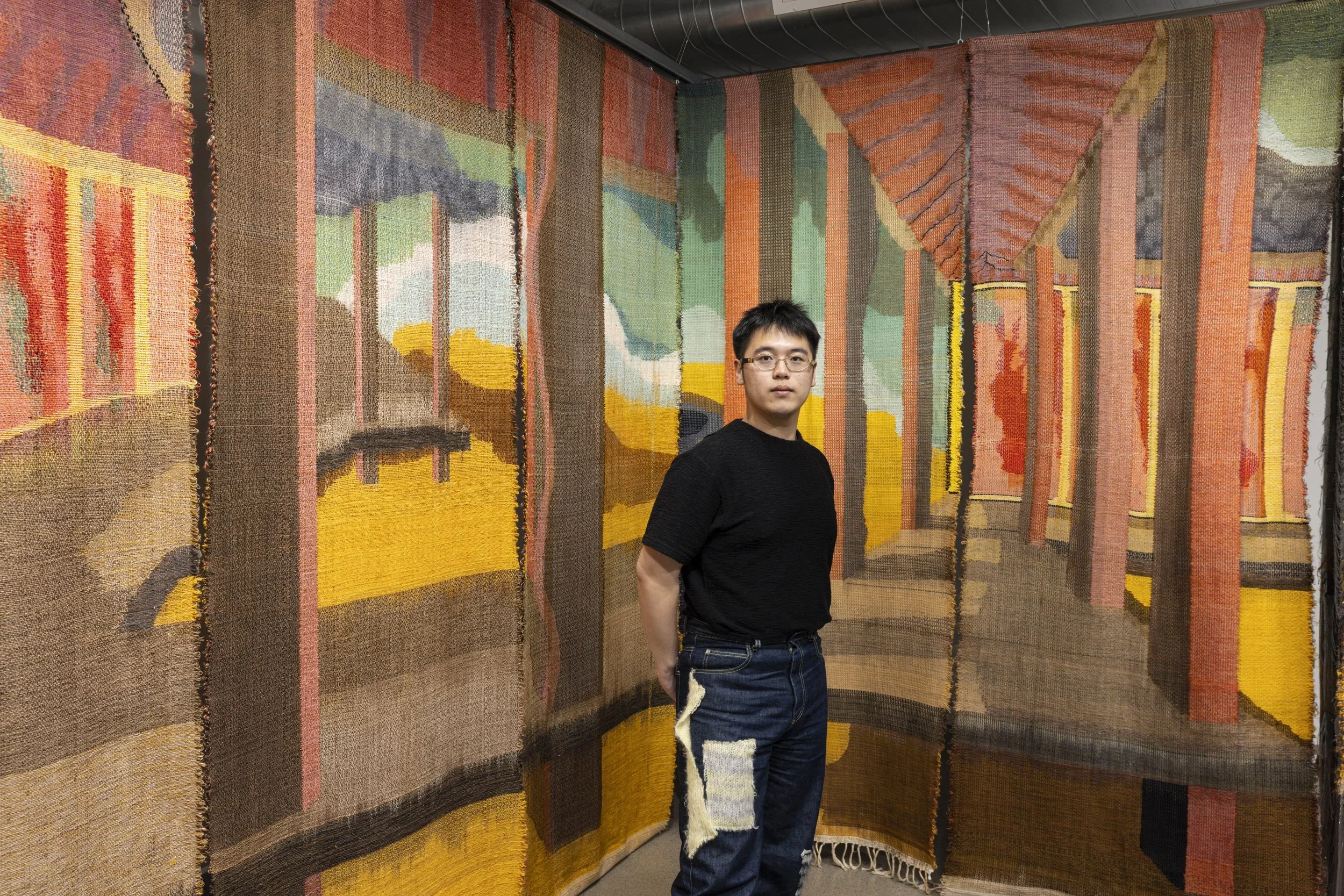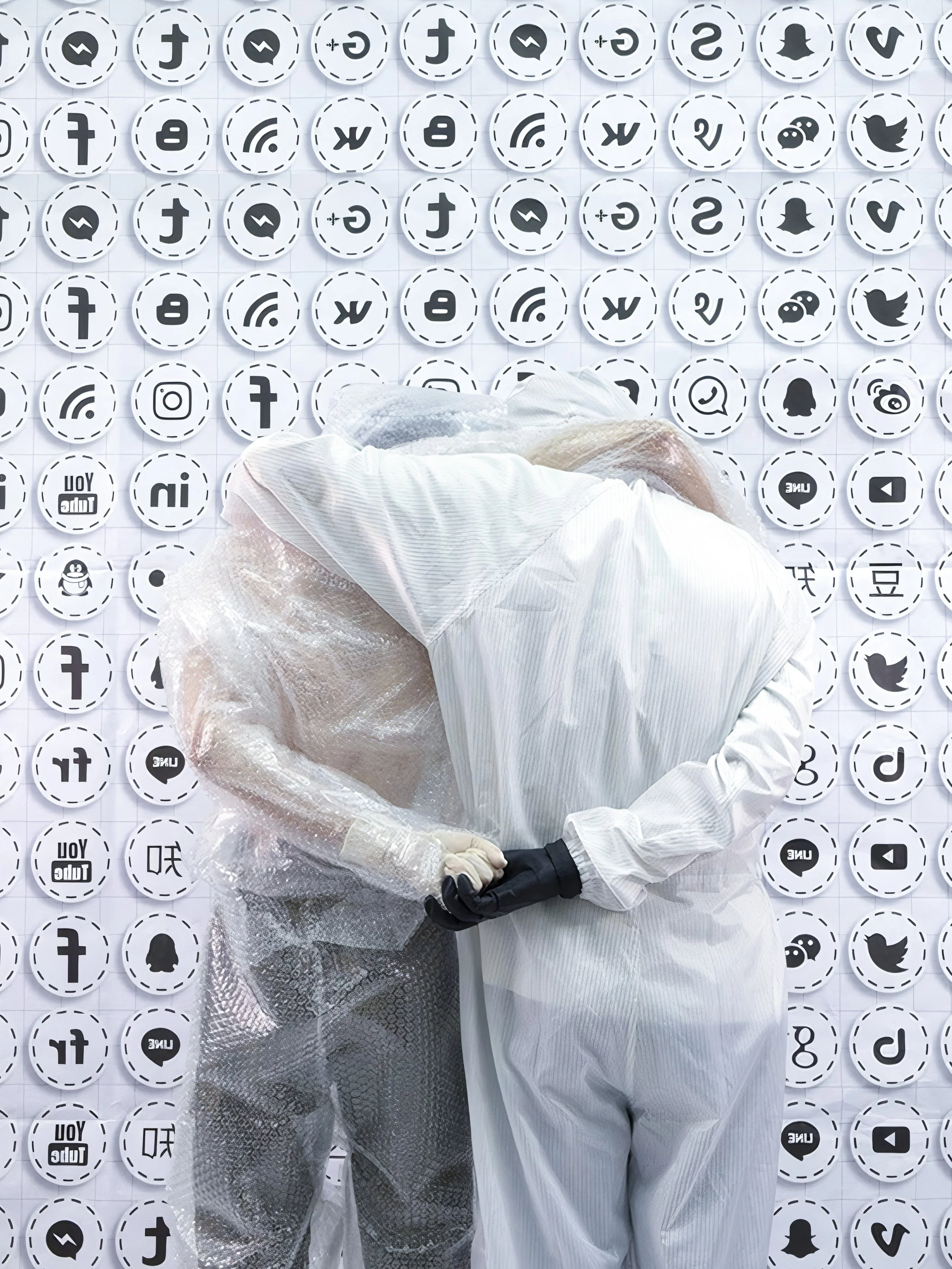10 Questions with Xinyu Zhang
Xinyu Zhang, also known as DayDay, is a contemporary artist originally from Wuhan, Hubei, China, and currently based in New York. Her artistic journey delves into inner struggles and a deep-seated yearning for physical interaction. Nurturing a passion for art from an early age, Xinyu initially focused on traditional sculpture during her undergraduate studies at the Hubei Institute of Fine Arts (HIFA), laying the groundwork for her transition to contemporary art.
Drawing inspiration from daily observations, existential reflections, and a relentless curiosity to explore diverse materials, Xinyu's art is distinguished by minimalist lines and symbols, continually seeking a delicate balance between design principles and fine art.
Xinyu graduated with a Bachelor's degree in sculpture from HIFA, and her graduation works earned her recognition from the ZengZhuShao Sculpture Fellowship. She furthered her studies at the School of the Art Institute of Chicago (SAIC), pursuing a Master's in Fashion, Body, and Garment. During her time at SAIC, Xinyu was honored with the Lisa Wainwright Grad Merit Scholarship. Post-graduation, TEDxChicago selected her as an invited artist for their opening event.
Xinyu Zhang - Portrait
ARTIST STATEMENT
Xinyu Zhang (DayDay) is a sculptor and material explorer whose works express a profound longing for connection, a relentless determination to persevere, and a resolute effort to transcend fragility, embodying a physical struggle along life's journey. Utilizing materials such as wood, metal, and foam, she navigates her creative process from a realm of intuition and chaotic sensations, gradually shaping forms that serve as meditations on self-awareness. Through a cyclical journey of exploration, definition, challenge, presentation, and further exploration, she gives tangible form to her inner experiences.
Xinyu is committed to fostering communication and forging meaningful connections with viewers through her artwork, infusing them with interactive elements. She views audience engagement and feedback as integral to the completion of each piece, inviting participation as a crucial part of the artistic dialogue. This ethos extends to her installations in public spaces, which serve as reflections of her presence in the world. Her overarching goal is to strike a harmonious balance between artistic expression and life's experiences, as she continually seeks mastery over herself and her craft.
Time Machine, Aluminum, 54x54x56 in, 2023 © Xinyu Zhang
INTERVIEW
First of all, let's talk about yourself and your background. You studied traditional sculpture at the Hubei Institute of Fine Arts before moving to the School of the Art Institute of Chicago to pursue a Master's in Fashion, Body, and Garment. How do these different fields influence your current practice?
Studying Traditional Sculpture was a foundational experience for me. It taught me how to observe, from the outline of the human body to the details of muscle ripples and from facial expressions to the emotions conveyed in the eyes. It was a form of research into understanding other people.
Studying at SAIC offered a completely different experience. I applied to the fashion department not with the intention of entering the fashion field but because I admired Nick Cave's work and aspired to collaborate with him. Fortunately, I received the offer. The learning process at SAIC is more about understanding oneself and exploring inner thoughts—understanding myself. This aspect has been a bit challenging for me as I am still in the learning process.
Shield, Mixed media, variable dimensions, 2023 © Xinyu Zhang
Shield, Mixed media, variable dimensions, 2023 © Xinyu Zhang
What other training or experiences shaped your practice and yourself as an artist?
As an Artist Assistant, I worked closely with artist Chris Bradley after graduating. Throughout this experience, I observed firsthand how an artist operates, communicates, and thinks. Chris taught me many invaluable lessons that I couldn't learn in school. He motivated and encouraged me, offering guidance on navigating the art world, seeking opportunities, and seizing them. Beyond a professional relationship, we connected as friends, sharing both positive and negative experiences. I am immensely grateful for this enriching journey.
Moreover, maintaining curiosity has been a key element of my growth. Many of my skills were acquired through online research and exploration.
You define yourself as "a sculptor and material explorer," and your work embodies themes of longing for connection and perseverance. How do you use materials such as wood, metal, and foam to translate these inner experiences into tangible forms?
Being a "Sculptor and material explorer" does not simply imply my ability to use various materials or combine them in a single work. Instead, it signifies how I employ materials in my artistic process—those readily available in my surroundings and those I'm already familiar with. The majority of my works focus on a single main material. This choice is intentional, as these materials are integral to my personal growth and deeply influence my artistic practice. It reflects my yearning for connection and perseverance, as I consistently revisit and delve into these materials, uncovering new possibilities through repeated exploration.
Arrow with Wheel, Wood, Wheels, 41x14x3 in, 2022 © Xinyu Zhang
Arrow with Wheel (detail), Wood, Wheels, 41x14x3 in, 2022 © Xinyu Zhang
Can you describe your creative process when working with different materials? How do you select the materials that best capture the essence of the emotions and themes you wish to express?
I don't premeditate the use of materials when starting a project. I select soft or hard materials based on the emotion I aim to convey. In my piece 'KNOT,' I sought to express the accumulated contradictions in my heart, like a knot that can never be untied. Therefore, I opted for robust, solid materials—steel bars—to craft a knot that remains untied, symbolizing the challenge of unraveling inner conflicts.
Your dedication to transcending fragility is evident in your work. How do you achieve a sense of resilience and strength in your sculptures, even when using materials that may be inherently fragile?
I don't deliberately conceal the inherent character of the material. While I believe the size of the work imparts a sense of power to some extent, I also engage in surface treatments. Altering the texture of the material's surface can be highly effective in captivating the viewer's vision. I particularly enjoy it when people inquire about the materials I've used.
What challenges do you encounter when creating sculptures that embody abstract concepts and emotions, and how do you overcome them?
At the initial stage, my concept for the work tends to be overly specific, leaving little room for the audience's interpretation. This can weaken the emotional impact to some extent. Therefore, the challenge lies in the process of simplification, requiring the intentional removal of certain elements while strengthening those that remain.
KNOT, Steel, 49x31x27 in, 2023 © Xinyu Zhang
KNOT, Steel, 49x31x27 in, 2023 © Xinyu Zhang
Your artwork often invites audience engagement and feedback as integral parts of the artistic dialogue. How do you incorporate interactive elements into your pieces, and what role do viewers play in shaping the outcome?
I consider participants or integral elements of the work to be crucial. If the audience feels compelled to observe my work for a week upon encountering it, I consider that the intended emotions have been received and elicited feedback. In that sense, it marks a success for me.
As a sculptor committed to fostering communication and connection, how do you hope viewers will engage with and interpret your artwork?
I hope the audience can form their own interpretations. I particularly emphasize the significance of the title, as it serves as a guidepost, creating an environment for the work. This is why I rarely provide detailed introductions to my pieces. If the explanation is too explicit, abstract works lose their abstract nature. Historical abstract works are often interpreted diversely by contemporary people. Therefore, I aim for my work to evoke unique memories in the audience, even if it's as simple as recalling a day when they enjoyed incredibly delicious ice cream.
Ah!, Foam, paint, 73x2x68 in, 2023 © Xinyu Zhang
How do you balance your artistic vision with the feedback and interpretations of your audience? Are there instances where audience responses have influenced the direction of your work?
It's impossible to be entirely free from audience influence. Actually, this adds to my artistic dilemma. To minimize the impact of audience opinions on my creative process, I strive to maintain self-control. The audience is an unpredictable factor, like the ever-changing weather, and I continually remind myself that 'you can't satisfy everyone.' Nevertheless, I enjoy listening to the audience's thoughts, interpretations, and suggestions regarding my work. It's a fascinating experience, and I am genuinely grateful to those who share their insights. Every word they express becomes a wellspring of inspiration for me.
Lastly, in what ways do you see your artwork evolving in the future, and what new avenues of exploration are you excited to pursue in your practice?
I aspire for my work to evolve into more diverse forms. I often imagine what types of works I would like to create and how I would curate a show if I had a gallery space. Sound, painting, and photography are all creative techniques that I hold dear, and I consistently practice them. Surprisingly, these elements have never found their way into my formal works, and I am still seeking a way to incorporate them. I am eager to integrate these techniques into my future projects, and the mere contemplation of this possibility fills me with excitement.
Artist’s Talk
Al-Tiba9 Interviews is a promotional platform for artists to articulate their vision and engage them with our diverse readership through a published art dialogue. The artists are interviewed by Mohamed Benhadj, the founder & curator of Al-Tiba9, to highlight their artistic careers and introduce them to the international contemporary art scene across our vast network of museums, galleries, art professionals, art dealers, collectors, and art lovers across the globe.























